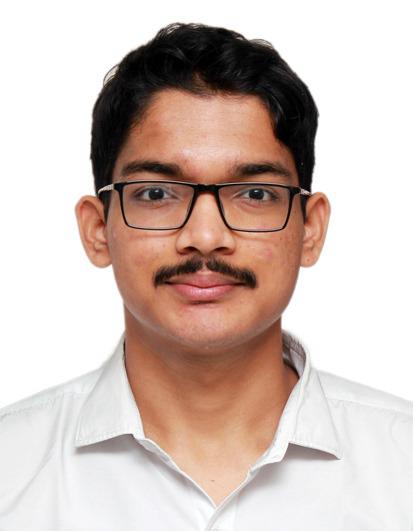Aditya Surve
Student Assistent, PEASEC TU Darmstadt
"From hackathon curiosity to academic research - my journey studying decentralized networks and disinformation patterns."
Story of trying to understand the digital world a little better: One dataset, One Setback, One Faint Hint Of Hope At A Time It all started during a hackathon in my third year of engineering, where I analyzed the spread of fake news related to the Russia-Ukraine conflict. Our models worked impressively on paper, 94.6% accuracy on propaganda, 93.1% F1 on fake news. But beyond the numbers, something else stuck with me: the realization that disinformation isn't random. It's designed. It's networked. It's dangerous. I didn't know it then, but that weekend of caffeine-fueled coding was going to shape everything that followed. This experience revealed to me the power of orchestrated disinformation campaigns. Motivated to continue such investigations, I joined the research collective SimPPL, founded by Dr. Swapneel Mehta, where I got an opportunity to extend my work in this domain. Unlike any other internship, SimPPL didn't just hand me a roadmap, but it did give me a compass. It gave me a room to choose, experiment, and, most importantly, make mistakes and learn from them.
Discovering Decentralized Networks
At that time, I was drawn to buzzwords like blockchain and decentralization. I didn't fully understand what they meant back then, but as I read more, I began to see the potential they held for the future.
Then, my project partner and I stumbled upon a platform called Bluesky, emerging as an alternative to Twitter. What intrigued me was its decentralized nature. Questions like "Is disinformation any different when there's no central gatekeeper?" started popping up, and things began to get interesting.
The Research Journey
Together, we set out to explore these uncharted areas of decentralized social networks. The lack of prior research made the journey more challenging, but also more exciting. We knew we were venturing into a space that hadn't been studied much before, and that was the motivation that kept us going.
We collected over 174 million data points, posts, reposts, likes, hashtags, blocks, and mentions. The number was staggering, and the process wasn't smooth. Rate limits. Broken APIs. Missing metadata. One obstacle after another, but as they say: "Smooth seas never made skilled sailors."
Breakthroughs and Recognition
To make sense of the vast Bluesky data, we designed a scalable web data collection architecture from scratch. This effort evolved through multiple iterations and adapted to shifting API endpoints. Through countless debugging sessions and redesigns, we reached a system that maintained a consistent uptime.
But gathering data was just the beginning. The real breakthrough came when we analyzed the effects of blocking, a feature often perceived as a straightforward safety mechanism. We discovered that blocking wasn't merely an act of self-protection; it had unintended ripple effects across the network. It influenced user posting behavior and, in some cases, even impacted overall content quality.
Our project, 'How Decentralization Affects User Agency on Social Platforms,' was selected for the ICWSM 2024 Data Challenge, marking our first small win, and it felt great. This work also culminated in our study being presented as a poster at the Third Annual Trust & Safety Research Conference at Stanford University. It was a surreal moment, watching our initial hackathon curiosity evolve into an academic conversation.
From Research to Impact
Even more surreal was the day when our research was presented to Bluesky's Head of Trust and Safety. The questions we had once jotted down as hypotheticals now sparked real policy dialogue.
Amidst this, with support from Google and Mozilla, we designed a fellowship program under the SimPPL umbrella, training over 30 students across India in responsible computing. It was a full-circle moment, standing in front of a new generation of learners, giving a talk about decentralized networks, the same thing I once fumbled through papers trying to understand.
But disinformation doesn't wait. Around this time, I began working with the Tech Global Institute, which collaborated with SimPPL, joining their project to monitor political discourse in Bangladesh. We tracked Facebook groups and pages linked to major parties using keyword analysis and community detection to uncover coordination patterns. The work was later featured in Prothom Alo, the country's leading newspaper, a reminder of how far a few lines of Python can ripple when paired with purpose.
This led me to a realization: I wasn't just interested in disinformation anymore. I was deeply drawn to the broader trust and safety ecosystem. And that's how I found myself at PEASEC.
Reflection
Today, I work at PEASEC – Science and Technology for Peace and Security at TU Darmstadt, where I serve as a student assistant. It is a research group working at the intersection of cybersecurity, peace, and human-computer interaction.
Looking ahead, I'm thinking about whether to focus more on academic research that influences policy, or to turn trust and safety ideas into real products that can be used at scale. Both paths excite me, but I still don't have complete clarity yet, but I know the kinds of questions I want to keep asking, and the kinds of systems I want to help shape.
One dataset, one setback, one faint hint of hope at a time, that's how it happened. What began with a question in a noisy hackathon hall turned into a journey of inquiry, impact, and relentless learning.
To Swapneel, Dhara, and the SimPPL community: thank you for creating a space where curiosity mattered more than credentials, where it was okay not to know, and where exploration was encouraged.

